Latest Electricity News - Workforce Safety
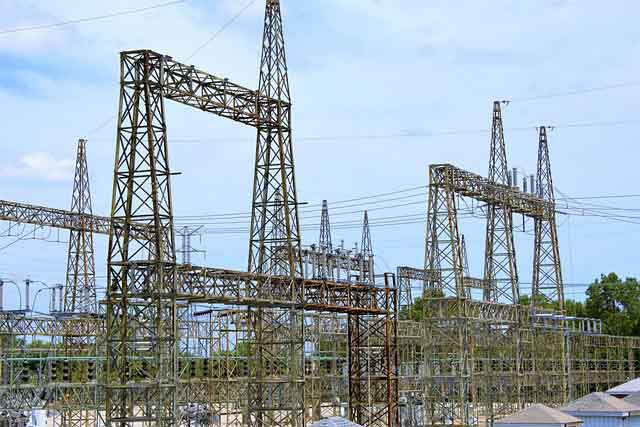
Berlin Electric Utility Wins National Safety Award
The Town of Berlin Electric Utility Department has been recognized for its outstanding safety practices with the prestigious Safety Award of Excellence from the American Public Power Association (APPA). This national honor is a testament to the utility’s commitment to maintaining the highest standards of safety for its workers, ensuring both their well-being and the continued reliability of the electrical services provided to the community.
Recognition for Excellence
In an era when workplace safety is a critical concern, the Town of Berlin Electric Utility Department’s achievement stands out. The department earned the Gold Designation award in the category for utilities with 15,000 to 29,999 worker hours of annual worker exposure. This category is part of the APPA’s annual Safety Awards, which are designed to recognize the safety performance of public power utilities across the United States.
Out of more than 200 utilities that participated in the 2024 Safety Awards, Berlin's Electric Utility Department distinguished itself with an exemplary safety record. The utility’s ranking was based on its low incidence of work-related injuries and illnesses, alongside its robust safety programs and strong safety culture.
What the Award Represents
The Safety Award of Excellence is given to utilities that demonstrate effective safety protocols and practices over the course of the year. The APPA evaluates utilities based on their incident rate, which is calculated using the number of work-related reportable injuries or illnesses relative to worker hours. This measurement adheres to guidelines established by the Occupational Safety and Health Administration (OSHA), ensuring a standardized approach to assessing safety.
For the Town of Berlin Electric Utility Department, achieving the Gold Designation award signifies a year of outstanding safety performance. The award reflects the department’s dedication to preventing accidents and creating a work environment where safety is prioritized at every level.
Why Safety Matters
For utilities like the one in Berlin, safety is not just about preventing injuries—it's about fostering a culture of care and responsibility. Electric utility workers face unique and significant risks, ranging from the dangers of working with high-voltage systems to the physical demands of the job. A utility’s ability to minimize these risks and keep its workforce safe is a direct reflection of its safety practices, training, and overall management.
The commitment to safety extends beyond just the immediate work environment. Utilities that place a high value on safety typically invest in ongoing training, safety gear, and processes that ensure all employees are well-prepared to handle the challenges of their roles. The Town of Berlin Electric Utility Department has taken these steps seriously, providing its workers with the resources they need to stay safe while maintaining the power supply for the local community.
The Importance of Worker Safety in Public Power
The American Public Power Association’s Safety Award program highlights the best practices in public utilities, which play a crucial role in providing essential services to communities across the country. Public power utilities, like Berlin’s, are governed by local or municipal entities rather than for-profit corporations, which often allows them to have a closer relationship with their communities. As a result, these utilities often go above and beyond when it comes to worker safety, understanding that the well-being of employees directly impacts the quality of service provided to residents.
For the Town of Berlin, this award not only highlights the utility's commitment to its employees but also reinforces the importance of the work that public utilities do in keeping communities safe and powered. Berlin's recognition underscores the significance of maintaining a safe work environment, especially when the safety of first responders and utility workers directly impacts the public’s access to reliable services.
What’s Next for Berlin’s Electric Utility Department
Receiving the Safety Award of Excellence is a remarkable achievement, but for the Town of Berlin Electric Utility Department, it’s not the end of their safety journey—it’s just one more step in their ongoing commitment to improvement. The department’s leadership, including the safety team, has emphasized the importance of continually evaluating and enhancing safety protocols to stay ahead of potential risks. This includes adopting new safety technologies, refining training programs, and ensuring that all employees are involved in the process of safety.
As the Town of Berlin looks forward to the future, its focus on worker safety will remain a top priority. Maintaining this level of safety is not only crucial for the health and well-being of employees but also for ensuring the continued success of the community’s utility services.
Community Impact
This recognition also serves as an example for other utilities in the region and across the country. By prioritizing safety, the Town of Berlin Electric Utility Department sets a standard that other utilities can aspire to. In a time when worker safety is more important than ever, Berlin’s commitment to best practices provides a model for others to follow.
Ultimately, the safety of utility workers is a reflection of a community’s dedication to its workforce and its commitment to providing reliable, uninterrupted services. For the residents of Berlin, the recognition of their local electric utility department’s safety practices means that they can continue to rely on a safe, secure, and resilient power infrastructure.
Sign Up for Electricity Forum’s News Service
Weekly updates from our FREE News Service—get the latest news, breakthrough technologies, and expert insights, delivered straight to your inbox.

Seattle Apartment Fire Caused by Overheated Power Strip
An early-morning fire in Seattle’s Capitol Hill neighborhood severely damaged a three-story apartment building, displacing one resident. The blaze, which broke out around 4:34 a.m. on a Friday, drew more than 70 firefighters to the scene and was later traced to an overheated power strip.
The Fire Incident
The Seattle Fire Department responded to the fire, which had started on the second floor of the building in the 1800 block of 12th Avenue. Upon arrival, crews were met with heavy smoke and flames coming from one unit. The fire quickly spread to a unit on the third floor, prompting the Seattle Fire Department to escalate their response to a two-alarm fire due to its size and the potential threat to nearby structures.
Firefighters initially attempted to contain the blaze from the exterior before they moved inside the building to fully extinguish the fire. Thankfully, the fire was contained to the two affected units, preventing the destruction of the remaining seven apartments in the building.
All residents safely evacuated the building on their own. Despite the substantial damage to the two apartments, no injuries were reported. One resident was displaced by the fire and was assisted by the Red Cross in finding temporary accommodation.
Cause of the Fire
Investigators later determined that the fire was accidental, most likely caused by an overheated electrical power strip. The power strip had reportedly ignited nearby combustible materials, sparking the flames that quickly spread throughout the unit. Although the exact details are still under investigation, the fire serves as a stark reminder of the potential risks associated with overloaded or damaged electrical equipment.
The Risks of Power Strips
Power strips, while essential for providing multiple outlets, can pose a serious fire hazard if used improperly. Overloading a power strip, plugging in too many high-wattage appliances, or using a damaged strip can lead to overheating, which is a common cause of electrical fires. Additionally, power strips should never be daisy-chained, meaning that one power strip should not be plugged into another. Such practices can cause the circuit to overheat and catch fire.
This fire in Seattle highlights the importance of maintaining electrical devices and following proper usage guidelines. According to experts, it is crucial to regularly inspect power strips for any visible damage, such as frayed cords or scorch marks, and to replace them if necessary. It's also advisable to avoid using power strips with high-power appliances like space heaters, microwaves, or refrigerators.
Impact and Community Response
The fire has raised awareness about the dangers of electrical hazards in residential buildings, especially in older apartment complexes where wiring systems may not be up to modern standards. Local authorities and fire safety experts are urging residents to review safety guidelines and ensure that their living spaces are free from potential fire hazards.
Seattle's fire department, which responded to this incident, continues to emphasize fire prevention and safety education. This event also highlights the importance of having working smoke detectors and clear escape routes in apartment buildings. The Seattle Fire Department recommends that all tenants know the locations of fire exits and practice safe evacuation procedures, especially in high-rise or multi-unit buildings.
Additionally, the Red Cross has stepped in to assist the displaced resident. The organization provides temporary shelter, food, and financial aid for those affected by disasters like fires. The fire underscores the importance of having emergency preparedness plans in place and the need for immediate relief for those who lose their homes in such incidents.
The Seattle apartment fire, which displaced one resident and caused significant damage to two units, serves as a reminder of the potential dangers associated with improperly maintained or overloaded electrical devices, especially power strips. While the cause of this fire was linked to an overheated power strip, it could have easily been prevented with regular inspections and safer practices.
As fire departments continue to respond to similar incidents, it is critical for residents to stay informed about fire safety, particularly regarding electrical equipment. Awareness, proper maintenance, and following safety protocols can significantly reduce the risk of electrical fires and help protect residents from harm.
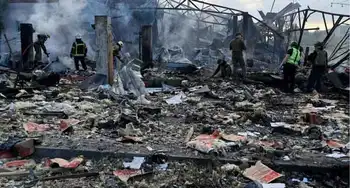
Kyiv warns of 'difficult' winter after deadly strikes
Ukraine has warned that difficult winter months lay ahead after a massive Russian missile barrage targeted civilian infrastructure, killing three in the south and wounding many across the country.
Russia launched the strikes as Ukraine prepares for a third winter during Moscow's 19-month long invasion and as President Volodymyr Zelensky made his second wartime trip to Washington.
"Most of the missiles were shot down. But only the majority. Not all," Zelensky said, calling for the West to provide Kyiv with more anti-missile systems.
The fresh attack came as Poland said it would honour pre-existing commitments of weapons supplies to Kyiv, a day after saying it would no longer arm its neighbour in a mounting row between the two allies.
Moscow hit cities from Rivne in western Ukraine to Kherson in the south, the capital Kyiv and cities in the centre and northeast of the country.
Kyiv also reported power cuts across the country -- in almost 400 cities, towns and villages -- as Russia targeted energy sites, but said it was "too early" to tell if this was the start of a new Russian campaign against its energy sites.
Last winter many Ukrainians had to go without electricity and heating in freezing temperatures as Russia hit Kyiv's energy facilities.
"Difficult months are ahead: Russia will attack energy and critically important facilities," said Oleksiy Kuleba, the deputy head of Kyiv's presidential office.
Ukraine also said that it had struck a military airfield in Moscow-annexed Crimea, a claim denied by Russian-installed authorities.
'Ceilings fell down'
Russia's overnight strikes were deadliest in the southern Kherson, where three people were killed.
In Kyiv's eastern Darnitsky district, frightened residents of a dormitory woke up to their rooms with shattered windows and parked cars outside completely burnt out.
Debris from a downed missile in the capital wounded seven people, including a child.
"God, god, god," Maya Pelyukh, a cleaner who lives in the building, said as she looked at her living room covered in broken glass and debris on her bed.
Her windows and door were blown away, with the 50-year-old saying she crawled out from under a door frame.
Some residents outside were still in dressing gowns as they watched emergency workers put out a fire the authorities said had spread over 400 square meters (4,300 square feet).
In the northeastern city of Kharkiv seamstresses were clearing a damaged clothing factory, with a Russian missile hitting nearby.
"The ceilings fell down. Windows were blown out. There are chunks of the road inside," Yulia Barantsova said, as she cleared a sewing machine from dust and rubble.
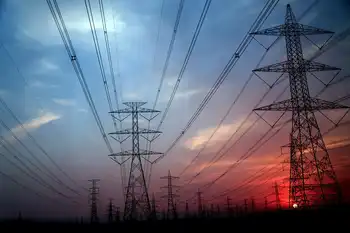
"Knowledge Gap" Is Contributing To On-the-job Electrical Injuries
A BC Hydro report finds serious electrical contact incidents are more common among trades workers, and research shows this is partly due to a knowledge gap.
Trade workers were involved in more than 60 per cent of electric contact incidents that led to serious injuries over the last three years, according to BC Hydro.
One-in-five trade workers have also either made contact or had a close call with electric equipment.
“New research finds many have had a close call with electricity on the job or have witnessed unsafe work near overhead lines or electrical equipment,” BC Hydro staff said in the report.
“A gap in electrical safety knowledge is a contributing factor in most of these incidents.”
Most electrical contact incidents take place in the spring and summer, when trade workers are working outdoors and are working in close proximity to power lines.
BC Hydro offered tips for trades workers who may work closely to possible electrical contact points:
- Look up and down – Observe the site beforehand and plan work so you can avoid contact with power lines
- Stay back – You and your tools should stay at least 3 m away from an overhead power line
- Call for help – If you come across a fallen power line, or a tree branch or object contacts a line—stay back 10 metres and call 911. Never try and move it yourself. If you must work closer than 3 m to a power line at your worksite, call BC Hydro before you begin.
- Learn about the risks – BC Hydro offers in-person and online electrical awareness training for anyone who works near electricity.
The report found that 38 per cent of trades workers who participated in the report said they only feel “somewhat informed” about safety measures around working near electricity and 71 per cent were unable to identify the correct distance they should be away from active power lines or electrical equipment.
BC Hydro said trade workers should participate in its electrical awareness training courses to make sure all safety measures are taken.

Survivors of deadly tornadoes may go weeks without heat, water, electricity, Kentucky officials say
Residents of Kentucky counties where tornadoes killed several dozen people could be without heat, water or electricity in frigid temperatures for weeks or longer, state officials warned Monday, as the toll of damage and deaths came into clearer focus in five states slammed by the swarm of twisters.
Authorities are still tallying the devastation from Friday's storms, though they believe the death toll will be lower than initially feared since it appeared many more people escaped a candle factory in Mayfield, Ky., than first thought.
At least 88 people — including 74 in Kentucky — were killed by the tornados which also destroyed a nursing home in Arkansas, heavily damaged an Amazon distribution centre in Illinois and spread their deadly effects into Tennessee and Missouri. Another 105 people were still unaccounted for in Kentucky as of Monday afternoon, Gov. Andy Beshear said.
As searches continued for those still missing, efforts also turned to repairing the power grid, sheltering those whose homes were destroyed and delivering drinking water and other supplies.
"We're not going to let any of our families go homeless," Beshear said in announcing that lodges in state parks were being used to provide shelter.
In Bowling Green, Ky., 11 people died on the same street, including two infants found among the bodies of five relatives near a residence, Warren County coroner Kevin Kirby said.
In Mayfield, one of the hardest hit towns, those who survived faced a high around 10 C and a low below freezing Monday without any utilities.
"Our infrastructure is so damaged. We have no running water. Our water tower was lost. Our waste water management was lost, and there's no natural gas to the city. So we have nothing to rely on there," Mayfield Mayor Kathy Stewart O'Nan said on CBS Mornings. "So that is purely survival at this point for so many of our people."
Across the state, about 26,000 homes and businesses were without electricity, according to poweroutage.us, including nearly all of those in Mayfield.
More than 10,000 homes and businesses have no water, and another 17,000 are under boil-water advisories, Kentucky Emergency Management Director Michael Dossett told reporters.
Dossett warned that full recovery in the hardest-hit places could take not just months, but years.
At least 74 people have been confirmed dead across Kentucky after tornadoes tore through the state, leaving some communities nearly totally destroyed and many residents wondering if they can afford to rebuild. 2:22
"This will go on for years to come," he said.
Authorities are still trying to determine the total number of dead, and the storms made door-to-door searches impossible in some places. "There are no doors," said Beshear.
"We're going to have over 1,000 homes that are gone, just gone," he said.
Beshear had said Sunday morning that the state's toll could exceed 100. But he later said it might be as low as 50.
'Then he was gone'
Initially as many as 70 people were feared dead in the candle factory in Mayfield, but the company said Sunday that eight were confirmed dead and eight remained missing, while more than 90 others had been located.
"Many of the employees were gathered in the tornado shelter and after the storm was over they left the plant and went to their homes," said Bob Ferguson, a spokesman for the company. "With the power out and no landline they were hard to reach initially. We're hoping to find more of those eight unaccounted as we try their home residences."

More people are climbing dangerous hydro dams and towers in search of 'social media glory,' utility says
More and more daredevils are climbing onto dangerous dams and power stations to gain likes and social media followers, according to a new report from BC Hydro.
The power provider says it's seen a 200 per cent uptick in trespassing into restricted areas over the past five years, with many of the incidents posted onto sites like YouTube, Facebook and Instagram.
"It's concerning for us because our infrastructure has risk with it," said David Conway, a community relations manager for BC Hydro.
"There's a risk of electrocution in regards to our transmission towers and our substations ... and people can be severely injured or killed," he said.
The company released a report Tuesday, noting specific incidents of users trespassing onto sites at Buntzen Lake in Anmore, Jones Lake in the Fraser Valley and Jordan River near Victoria. The incidents ranged from climbing transmission towers to swimming in restricted areas at dam sites.
Conway says annual incidents climbed from a handful to about one dozen, but BC Hydro expects the figures to be even higher. He says many more events likely go unreported.
The report ties the increase in incidents to the pursuit of "social media glory." Between 2011 and 2017, at least 259 people were killed worldwide in selfie-related incidents, according to the Journal of Family Medicine and Primary Care. Many of the incidents involved water, electrical equipment or dangerous heights.
In 2018, three social media personalities died after falling off a cliff at Shannon Falls near Squamish, B.C.
North Shore Rescue attributes about 30 per cent of its calls to outdoor users attempting to capture content for social media.
Survey results highlighted in the BC Hydro report show that 15 per cent of British Columbians admit to putting themselves in a dangerous position "to achieve the 'perfect' shot."
The survey was conducted online by 800 B.C. residents. For comparison purposes, a probability sample of the same size would yield a margin of error of plus or minus 3.5 per cent, 19 times out of 20.
Risky activities include standing at the edge of a cliff, knowingly disobeying safety signage or trespassing, or taking a selfie from a dangerous height.
Two per cent of British Columbians admit to injuring themselves in the name of a selfie.
"We want people to stay safe. We want to remind the public to stay a safe distance away from our infrastructure, as electricity and generating facilities can be dangerous," said Conway.
BC Hydro is urging all visitors to obey signage, steer clear of power-generating equipment and to stay on designated trails.
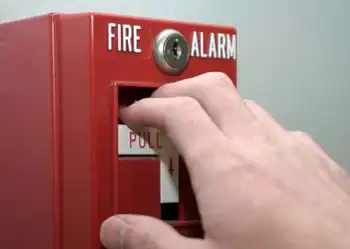
Fire Alarm Training Online - Life Safety Equipment & Systems - Design, Installation, Inspection, Testing, Service & Maintenance
The Electricity Forum has organized a series of Fire Alarm Training courses this Fall. Our 12-Hour Live Online instructor-led course goes well beyond the recitation of Codes and Standards. We examine the purpose and specific application of the different codes and standards that regulate the industry. Avoid installation errors, failed inspections and false alarms!
- September 16-17 , 2020 - 10:00 am - 4:30 pm ET
- October 15-16 , 2020 - 10:00 am - 4:30 pm ET
- November 12-13 , 2020 - 10:00 am - 4:30 pm ET
- December 14-15 , 2020 - 10:00 am - 4:30 pm ET
Electricity Forums Training Institute’s (EFTI) Fire Alarm Training Course qualifies for four (4) hours of CFAA Technician Renewal Credits (Category 5 Course), as per the CFAA website at http://www.cfaa.ca/cecreditform.aspx). To earn these credits, you must submit the EFTI Certificate of Completion, along with the course outline and the training schedule to the CFAA.
Our Fire Alarm Training course goes well beyond the recitation of Codes and Standards. Complete with 8 Interactive Workshops on fire alarm protection systems that examine the purpose and specific application of the different codes and standards that regulate the industry. Avoid installation errors, failed inspections and false alarms! This interactive course maximizes its impact through dynamic curriculum and a learning environment that encourages discussions with other course attendees. Workshops are taught by a recognized and experienced fire protection professional who understands today’s changing safety dynamics. Our fire alarm class will provide the latest information on fire alarm panels, wireless smoke detectors, integration with security systems alarms, fire alarm wiring, fire panels, heat detectors, fire bells, fire protection systems, and fire alarm anunciators, and much, much more.
You’ll bring your knowledge up-to-code with in-depth instruction that focuses on the correct design, installation, testing, and use of fire alarm systems and signaling systems and help your company pass fire inspections more effectively. This course is suitable for fire alarm technicians.
Technical workshops and exercises are based on the types of challenges you encounter in the field, so you’ll leave with a wealth of practical tips, insights, and solutions you can immediately implement back on the job. This course will review the types of fire alarm systems, their selection and their applications for structures and processes. It will also cover special systems designed to prevent costly, life-threatening industrial fires and/or explosions.
Complete Course Details Here:
https://electricityforum.com/electrical-training/fire-alarm-training

More young Canadians would work in electricity… if they knew about it
Generation Impact Report reveals how Canada's electricity sector can recruit Millennials and Gen Z, highlighting workforce gaps, career pathways, innovative projects, secure pay, and renewable energy opportunities to attract young talent nationwide.
Key Points
An EHRC survey on youth views of electricity careers and recruitment strategies to build a skilled workforce.
✅ Surveyed 1,500 Canadians aged 18-36 nationwide
✅ Highlights barriers: low awareness of sector roles
✅ Emphasizes fulfilling work, secure pay, innovation
Young Canadians make up far less of the electricity workforce than other sectors, says Electricity Human Resources Canada, as noted in an EHRC investment announcement that highlights sector priorities, and its latest report aims to answer the question “Why?”.
The report, “Generation Impact: Future Workforce Perspectives”, was based on a survey of 1500 respondents across Canada between the ages of 18 and 36. This cohort’s perspectives on the electricity sector were mostly Positive or Neutral, and that Millennial and Gen Z Canadians are largely open to considering careers in electricity, especially as initiatives such as a Nova Scotia energy training program expand access.
The biggest barrier is a knowledge gap in electrical safety that limits awareness of the opportunities available.
To an industry looking to develop a pipeline of young talent, “Generation Impact” reveals opportunities for recruitment; key factors that Millennial and Gen Z Canadians seek in their ideal careers include fulfilling work, secure pay and the chance to be involved in innovative projects, including specialized arc flash training in Vancouver opportunities that build expertise.
“The electricity sector is already home to the kinds of fulfilling and innovative careers that many in the Millennial and Gen Z cohorts are looking for,” said Michelle Branigan, CEO of EHRC. “Now it’s just a matter of communicating effectively about the opportunities and benefits, including leadership in worker safety initiatives, our sector can offer.”
“Engaging young workers in Canada’s electricity sector is critical for developing the resiliency and innovation needed to support the transformation of Canada’s energy future, especially as working from home drives up electricity bills and reshapes demand,” said Seamus O’Regan, Canada’s Minister of Natural Resources. “The insights of this report will help to position the sector competitively to leverage the talent and skills of young Canadians.”
“Generation Impact” was funded in part by the Government of Canada’s Student Work Placement Program and Natural Resources Canada’s Emerging Renewable Power Program, in a context of rising residential electricity use that underscores workforce needs.
Related News
EF Partner Media
Related Articles From ET Magazine
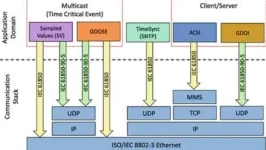
Understanding the IEC 61850 Protocol in Substation Automation
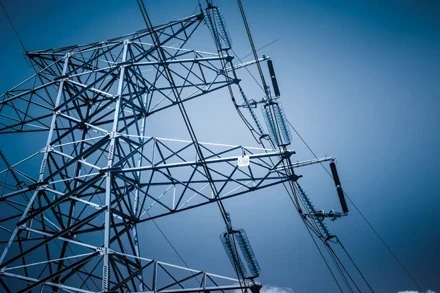
Climate Change Fuels Spread of Deadly Fungal Infections in the UK
As global temperatures rise, scientists warn that the UK faces an increasing threat from deadly fungal infections, particularly those caused by the Aspergillus species. These fungi, which can lead to severe respiratory illnesses and brain infections, are projected to expand their range into northern Europe, including the UK, due to climate change.
The Aspergillus Threat
Aspergillus fumigatus and Aspergillus flavus are the primary culprits behind invasive aspergillosis, a life-threatening disease that affects the lungs and can spread to other organs, including the brain. These fungi produce airborne spores that can be inhaled, posing significant risks to individuals with weakened immune systems, such as those undergoing chemotherapy or organ transplants. In the UK, the incidence of aspergillosis is expected to rise as the climate warms, potentially leading to increased hospital admissions and mortality rates.
Climate Change and Fungal Expansion
Research indicates that rising global temperatures are creating more favorable conditions for the proliferation of Aspergillus species. A study led by Norman van Rhijn at the University of Manchester suggests that by 2100, A. fumigatus could expand its range by 77%, potentially exposing an additional 9 million Europeans to infection. Similarly, A. flavus is expected to spread into new regions, including parts of the UK. These projections underscore the urgent need for enhanced surveillance and preparedness to mitigate the impact of these fungal pathogens.
Challenges in Detection and Treatment
Diagnosing fungal infections can be challenging, as symptoms often overlap with other respiratory illnesses. Moreover, antifungal treatments are limited, and resistance is becoming more prevalent. The World Health Organization lists A. fumigatus as one of the most critical fungal pathogens, highlighting the need for improved diagnostic tools and treatment options.
Impact on Agriculture and Food Security
Beyond human health, Aspergillus species pose a significant threat to agriculture. A. flavus produces aflatoxins, potent carcinogens that can contaminate crops such as maize, peanuts, and cotton. Climate change is expected to exacerbate the spread of these toxins, affecting food safety and security. Increased temperatures and humidity levels can enhance the growth of A. flavus, leading to higher aflatoxin contamination in crops.
Urgent Need for Action
Experts emphasize the importance of addressing the dual threats of climate change and fungal infections. Investing in fungal research, improving diagnostic capabilities, and developing effective treatments are critical steps in mitigating the impact of these pathogens. Public health systems must be equipped to recognize and respond to emerging fungal threats, particularly as climate change continues to alter the distribution of infectious diseases.
In conclusion, the spread of deadly fungal infections in the UK, driven by climate change, presents a multifaceted challenge to public health and agriculture. Proactive measures are essential to prevent widespread outbreaks and safeguard the well-being of populations at risk.
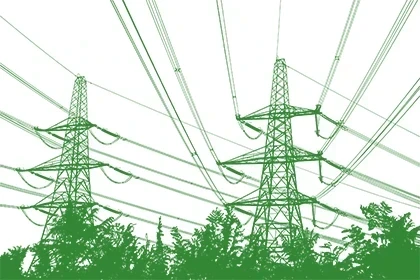
Climate Change Impacts and Adaptation Efforts in British Columbia
As of early May 2025, British Columbia is experiencing significant climate-related challenges, including rising temperatures, increased wildfire risks, and ecological disruptions. These developments underscore the urgency for comprehensive adaptation strategies to safeguard communities and ecosystems.
Escalating Wildfire Risks
The province is witnessing an early onset of wildfire season, with 107 active fires reported. Experts attribute the heightened risk to a combination of warmer temperatures and prolonged drought conditions. The BC Wildfire Service has indicated a "high potential for an active spring wildfire season," emphasizing the need for preparedness and swift response measures.
Ecological Disruptions in Urban Forests
In Vancouver's Stanley Park, climate change is manifesting through the proliferation of the western hemlock looper moth, which has led to the death of approximately 160,000 trees. These moths thrive in warmer winters, facilitated by climate change, and have caused significant ecological damage to the park's century-old trees.
Urban Heat and Infrastructure Challenges
Projections indicate that by 2050, Vancouver's climate could resemble that of San Diego, with average summer temperatures rising and increased occurrences of "tropical nights." This shift necessitates urgent adaptations in urban planning and infrastructure to mitigate heat-related health risks and manage water resources effectively.
Strategic Adaptation Initiatives
In response to these challenges, Vancouver has updated its Climate Change Adaptation Strategy, focusing on enhancing resilience against extreme heat, poor air quality, drought, extreme rainfall, and sea level rise. Key initiatives include:
-
Urban Greening: Expanding tree canopy coverage to 30% by 2050 to provide natural cooling and improve air quality.
-
Building Retrofits: Upgrading 30 buildings to enhance cooling and reduce emissions.
-
Green Infrastructure: Implementing green rainwater infrastructure across three hectares of city streets to manage stormwater and mitigate urban heat island effects.
-
Coastal Adaptation: Developing a city-wide coastal adaptation policy to address sea level rise and coastal flooding.
Community Engagement and Equity
The strategy emphasizes equity, recognizing that climate change disproportionately affects vulnerable populations. Each action plan incorporates equity outcomes, ensuring that adaptation measures benefit all residents, particularly those most at risk.
British Columbia's proactive approach to climate adaptation, exemplified by Vancouver's updated strategy, sets a precedent for other regions facing similar challenges. By integrating climate resilience into urban planning and community development, the province aims to safeguard its residents and ecosystems against the escalating impacts of climate change.

Canada Files 200 Fisheries Act Charges Against ArcelorMittal for Alleged Environmental Violations
In a significant enforcement action, Environment and Climate Change Canada (ECCC) has laid 200 charges against ArcelorMittal Canada, alleging violations of the Fisheries Act. The charges pertain to the unlawful deposit of harmful substances into fish-bearing waters in Quebec between 2014 and 2022. These alleged infractions occurred at the Fire Lake Mine and the Mont-Wright mining complex, the latter being the largest open-pit iron mine in Canada. The affected waterways flow into the Moisie River, a provincially administered aquatic reserve and one of North America's major salmon rivers.
Background of the Allegations
The Fisheries Act prohibits the deposit of deleterious substances into waters frequented by fish or in places where such substances may enter these waters. ECCC's enforcement officers initiated investigations into ArcelorMittal Canada's operations at the Fire Lake and Mont-Wright sites after receiving reports of potential environmental violations. The subsequent investigations led to the filing of 200 charges against the company for allegedly permitting or causing the deposit of harmful substances into the aforementioned waterways.
Environmental Significance of the Moisie River
The Moisie River holds ecological importance due to its role as a habitat for Atlantic salmon, a species of significant conservation concern. The river's designation as a provincial aquatic reserve underscores its environmental value and the necessity for stringent protection measures. Alleged contamination of its tributaries could have detrimental effects on local biodiversity and water quality, highlighting the gravity of the charges against ArcelorMittal Canada.
Previous Environmental Infractions
This is not the first instance of ArcelorMittal Canada facing legal action for environmental violations. In 2022, the company and its partner, 7623704 Canada Inc., were fined a total of $15 million for offenses related to the Mont-Wright mining complex. These offenses included unauthorized deposits of toxic substances into fish-bearing waters and the failure to comply with effluent monitoring regulations. The court's decision to impose substantial fines reflects the seriousness with which environmental breaches are treated under Canadian law.
Potential Implications for ArcelorMittal Canada
If convicted, ArcelorMittal Canada could face significant legal and financial repercussions. The Fisheries Act provides for substantial penalties, including fines and orders for remediation. Additionally, a conviction could lead to reputational damage, affecting the company's standing with stakeholders and the public. The ongoing legal proceedings will determine the extent of the company's liability and the appropriateness of any penalties.
Broader Environmental Enforcement Context
The charges against ArcelorMittal Canada underscore the Canadian government's commitment to enforcing environmental protection laws. ECCC's proactive approach in investigating and prosecuting alleged violations serves as a deterrent to other corporations and reinforces the importance of corporate responsibility in environmental stewardship. The outcome of this case may influence future enforcement actions and the development of environmental policies in Canada.
The 200 charges laid against ArcelorMittal Canada highlight the critical need for adherence to environmental regulations in industrial operations. As the legal process unfolds, it serves as a reminder of the importance of safeguarding Canada's natural resources and holding corporations accountable for their environmental impact. The case will likely have lasting implications for environmental governance and corporate accountability in the country.
Electricity Today T&D Magazine Subscribe for FREE

- Timely insights from industry experts
- Practical solutions T&D engineers
- Free access to every issue
EF T&D Live Online Forums
Register for our FREE T&D Live Online Forums and join our live expert-led webinars on the latest electrical industry topics.- Industry expert insights on trending technologies
- Free access to recorded webinar presentations
- Downloadable PDF presentations
- Convenient viewing on your schedule—no attendance required







